Articles
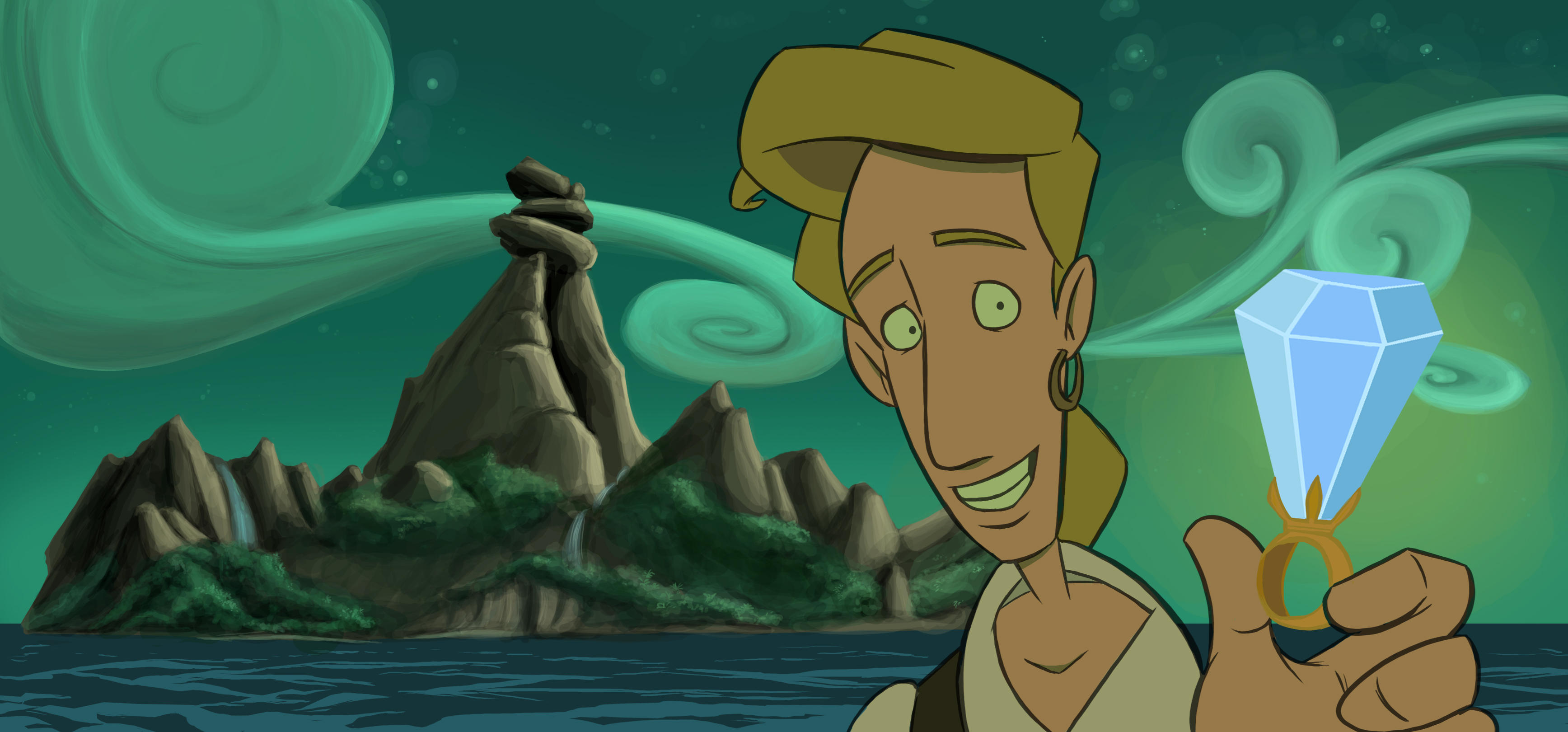
LucasArts' Secret History #12: The Curse of Monkey Island Trivia and Secrets
Trivia!
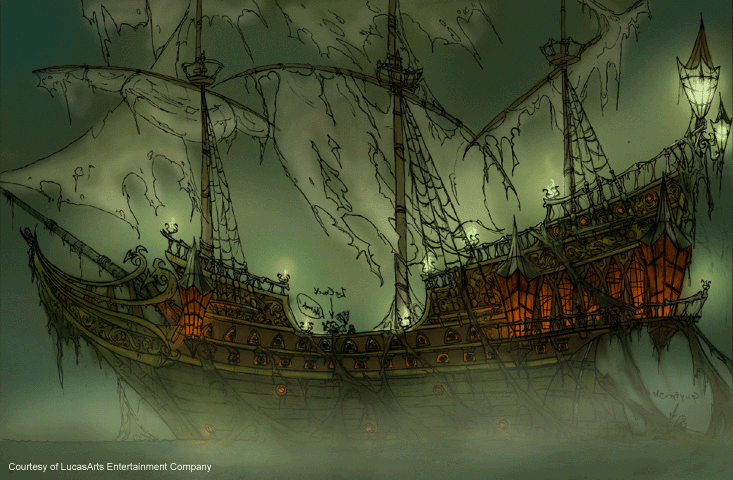
Although they were aware that Ron Gilbert's revelation at the end of LeChuck's Revenge was meant to be taken at face value, the CMI team concluded that without Gilbert making it, the only appropriate direction for a third Monkey Island game would be for it to continue to take place in the world introduced by the first two games, rather than working under the assumption that Guybrush's anachronistic Caribbean universe was fictional. The fact that LeChuck's eyes glowed at the end of LeChuck's Revenge (no doubt intentionally put there to make a non-insane third game possible), gave the team the opportunity to write off the bizarre ending as the result of a voodoo spell.
Ron Gilbert continues to insist that he has his version of the third game (which he once jokingly or non-jokingly suggested would be called Monkey Island 3b: The Secret Revealed or Your Money Back) mapped out in his head, and that he would be happy to make it, completing his trilogy, if given the opportunity. (LucasArts and not he owns the rights to the series.) Although this is no doubt true, Gilbert has been criticized for using the mystique of the series' titular "Secret" (assuming any secret remains) to stoke fan obsession over the game's "true" third installment, which die-hard fans of Gilbert who disliked the canon sequels can assume the best of when it conveniently has no possibility of being made.Larry Ahern and Bill Tiller offered Steve Purcell to paint the cover art as he'd done for the first two games, but Purcell, impressed with the style they created for the franchise, insisted that they do it themselves.
In the 90s there was a department (no longer existent) at Industrial Light and Magic that would develop screenplays for LucasFilm properties. One such project was an animated film, a loose adaptation of The Curse of Monkey Island. The project was in early preproduction when the department was shut down in a company reorganization, but Steve Purcell drew concept art for it, which can be found online. Tony Stacchi was another concept artist on the project.As always, the game contains more Star Wars references than can possibly be counted.
As is often in the case, there are LEC logos hidden in various backgrounds throughout the game.
The characters in this game have four fingers on each hand.
When he first meets Murray, Guybrush has the option to deliver the dialogue line, "Can I call you BOB?" This is likely a reference to Bob in The Secret of Monkey Island, a skeletal ghost on LeChuck's crew who can detach his head.
Guybrush can tell the Skull Island smugglers of the diamond that "It belongs in a museum!" A reference to Indiana Jones and the Last Crusade, it's also a reference is made in The Secret of Monkey Island when Guybrush is defending the theft of the Idol of Many Hands to Elaine Marley.
A reference to the occupation of a flooring inspector is made during the conversation between Guybrush and Minnie Goodsoup. Guybrush is told that he looks like a flooring inspector in the opening moments of The Secret of Monkey Island.
The clock in the Plunder Island square reads the time of the computer. Similarly, Palido Domingo's response to Guybrush's question regarding how long he'd been tanning is dependent on the computer's clock.
If you leave Guybrush idle for awhile during Edward Van Helgan's banjo playing, he will pull out a lighter.
Dominic Armato was a huge fan of the series and of LEC adventures in general before landing the role of Guybrush Threepwood, and even once joked with his friends that playing the role of the character would be his dream voice acting job, a remark he made a mere two weeks before being granted the audition.
While dressed as a giant chicken, try visiting various places on Plunder Island for characters' reactions.
Wally quotes Purple Tentacle in one of his comments while firing the cannon: "I feel like I could…TAKE ON THE WORLD!"
In a discussion with LeChuck on the rollercoaster, Guybrush can say, "Cripes!" to which LeChuck will add, "On toast!" This is a reference to the expression "Holy cripes on toast!" heard in Sam & Max Hit the Road. Other references to Hit the Road can be seen when Guybrush examines various signs at the Carnival of the Damned.
Mort's assumption that the main character of a LucasArts adventure game can't die is a nod to the fact that this became company design policy beginning with Loom (with some slight exceptions such as Fate of Atlantis and some gag deaths scenes).
When finding Wally hanging above an acid pit in the rollercoaster diorama, he says, "Could you please stop that annoying swinging?" after which he will. Guybrush can say the same thing to Wally in Monkey Island 2 when he's in a similar predicament, and he will comply.
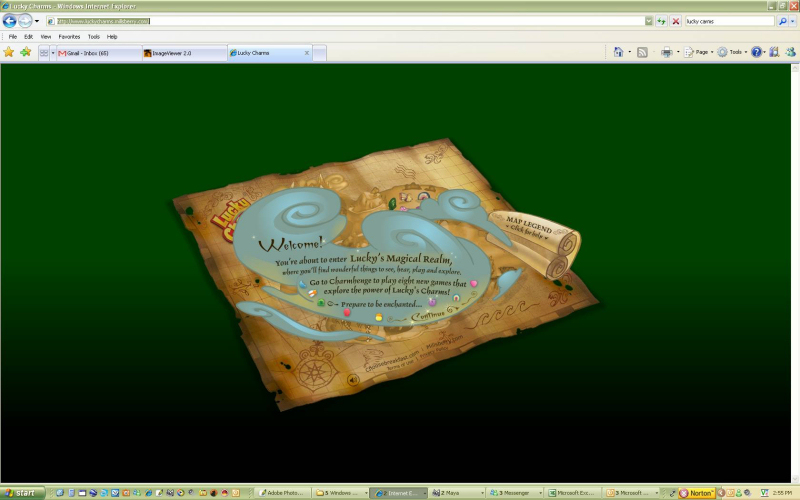
The game's humorous unit of monetary currency replaces the series' usual piece of eight. However, references to pieces of eight can be found in Griswold Goodsoup's recipe book, which also includes the recipes for all three drinks Guybrush can order from The Bloody Lip Bar in Monkey Island 2.
Blizzard reps have insinuated that the intimidating competition that The Curse of Monkey Island represented was a factor in why Warcraft Adventures (no doubt the most infamous graphic adventure cancellation prior to Sam & Max 2) was cancelled. Much like Sam & Max 2, Warcraft Adventures was cancelled well into its production and had a trailer and screenshots released. For more information on that project, check out its Wikipedia page.
The game is dedicated to the memory of Brett Barrett, who was a writer/programmer on Monkey Island 2, and was on the team of many early 90s LucasArts/Humongous SCUMM adventure games. Barrett was tragically killed in a motorcycle accident in the mid-90s.
According to rumor, LucasArts management denied the consulting input of Ron Gilbert due to animosity over his use of the SCUMM engine in Humongous adventure games. Nonetheless, Gilbert was pleased with the team's results and has praised the game, noting that the only thing he felt was definitely "wrong" from his perspective character-wise was the romance between Guybrush and Elaine. Of their relationship, Gilbert says that "Elaine thinks of Guybrush as more of a brother," and without delving into specifics noted that his game would have been very different.
When examining the lighthouse lens, Guybrush remarks with relief that it requires no adjustment. This is a jab at The Dig, which required Boston Low to constantly adjust lenses in order to make the light bridges function.
When looking at the raven in Mort's bedroom, Guybrush remarks that it's "the stuff really boring dreams are made of," a reference to Humphrey Bogart's final line in The Maltese Falcon. In Indiana Jones and the Fate of Atlantis, Indy quotes the movie accurately when examining a blackbird statue.
Pressing Shift+J during swordfighting scenes will replace the clanks of metal with lightsaber sounds, and typing "lapostal" during the cannonball middle game will turn "Unlimited cannon balls mode ON" – a cheat featured in Dark Forces.
There are two easter eggs in the game that allow Guybrush to briefly revisit a location from The Secret of Monkey Island. One is on Blood Island, triggered when Guybrush attempts to "Use" the beach water (where the Flying Welshman resides) thirty times. Another is also on Blood Island, triggered when Guybrush examines the large crack in the wall in the interior of the Goodsoup family tomb.
Entering and reentering Stan's crypt thirty-five times will result in an image of the spider-like creature from The Dig. In another reference The Dig, Guybrush can get his hand "stuck" in the crack in the wall that separates the Goodsoup family crypt and Mort's bedroom.
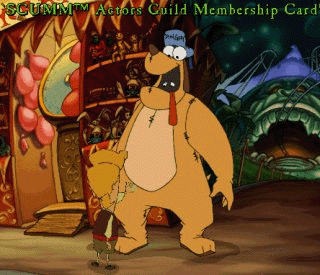
The design of the rollercoaster on Monkey Island, complete with "dynamo monkey-electric" dioramas, is modeled after Disneyland rides, building off of the E-ticket and underground tunnels seen at the end of LeChuck's Revenge. The Pirates of the Caribbean ride is, of course, one of the main inspirations for the series' conception.
When reading from the book of ventriloquism, Guybrush can say, "Make me balder than Largo LaGrande."
A joke about Loom's obscurity is made when Guybrush warns LeChuck that killing him will cause him to become "just another has-been," namechecking Bobbin Threadbare as an example. In another reference to Loom, the Voodoo Lady tells Guybrush to be thankful that Elaine wasn't turned into a swan.
International versions of the game drop the interactive song at the beginning of the game's third Part, "A Pirate I Was Meant To Be," in the translated vocals due to the difficulty that would have been involved. Instead, the game cuts immediately to Haggis' question regarding the kind of captain Guybrush is.
Guybrush is a member of the "SCUMM Actors Guild."
The INSANE engine is reprised from Full Throttle and The Dig, to enhance cutscenes. (According to clone2727, CMI and The Dig actually uses SMUSH, though INSANE is credited nevertheless).
The game's abrupt ending was the result of the budget running thin at the end of production. Although a more elaborate climax was conceptualized (Elaine battling an army of skeletons, an explanation for how she redirected the rollercoaster tracks, and a closing credits song), project leaders Ackley and Ahern opted to prioritize the gameplay segments of the game above the cutscenes, to ensure that when money ran out, the important parts of the game weren't compromised. Said Ackley: "If the worst complaint people have about the game is, 'this one cut-scene was too short,' I can live with that."
Indiana Jones and the Infernal Machine, released in 1999, included a cheat mode that turned Indy into a 3D version of Guybrush (modeled after his CMI look), equipped with a bazooka that fires rubber chickens. Additionally, there is a secret room in the game: the Barbery Coast as a 3D environment.
It was around the time of CMI's production and release that the LEC adventure community scene erupted, resulting in The LucasArts Fan Network, which encompassed such sites as this one and The SCUMM Bar, and a billion since abandoned fan pages for the game.
The game's art style heavily inspired the look of The Secret of Monkey Island comic adaptation, an ongoing online fan work by Paco Vink (who's also responsible for the excellent header image for this article!).
Another fanmade project included Blood Island 3D, an attempt to render the game's Blood Island locations as 3D environments.
The Barbery Coast is likely a reference to The Barbary Coast, a real-life place in San Rafael, California, near where the game was developed.
When in the quicksand, there is a sign by the patch of thorns that Guybrush can read, informing him of the native word "Pappapishu." If you have Guybrush read this sign, every time he would have said the recurring line "Yowtch!" throughout the game, "Pappishu" will be in its place. (Example: when Guybrush drinks a grog at the Goodsoup hotel). This also applies to other characters, such as the cabana boy when Guybrush stings him with the wet towel.
This is the second time the Voodoo Lady has moved her place of business, it being located on Melee Island in the first game, on Scabb Island in the second, and on Plunder Island here. For the fourth game, she would move back to Melee.
The name of LeChuck's ship seen at the beginning of the game, The Death Starfish, is never mentioned in the actual game.
In a preview for the game in the magazine PC Gamer, Ackley and Ahern admitted that they wanted Kenny Falmouth to respond, "Whatchu talkin' 'bout, Guybrush?" (a play on Gary Coleman's signature phrase on "Diff'rent Strokes") to a question from Guybrush, but thought better of it.
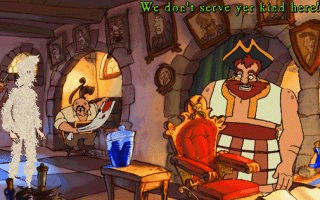
In this game, Guybrush has an inexplicable repulsion/fear of porcelain, as can be seen whenever the player has him look at vases throughout the game. This unusual character trait would be carried over into Escape from Monkey Island. The background for this joke is unclear - while some team members insist that it is simply a random joke with no significance, Bill Tiller is under the impression that Guybrush's porcelain phobia has something to do with Fester Shinetop hitting him over the head with a vase in The Secret of Monkey Island.
Like in Monkey Island 2 and the Haunted Mansion ride which likely served as inspiration, Guybrush can read humorous epitaphs off the gravestones in the Blood Island cemetery.This was the first LucasArts adventure game to be released on two CDs.
In discussing his backstory, Van Helgen claims that his musical troupe "once had a tenor named Dominique." Guybrush claimed to have "once had a cousin named Dominique" to the shady map seller in The Secret of Monkey Island.
Guybrush asks the Voodoo Lady if the fondue she is preparing "has any Skink Toes in it," a reference to one of the voodoo ingredients one could find when rummaging through the Voodoo Lady's stores at the International House of Mojo in Monkey Island 2: LeChuck's Revenge.
In The Secret of Monkey Island, a patron of the SCUMM Bar is wearing a button that reads, "Ask me about LOOM," a shameless advertisement for that simultaneously developed game. Here, the joke is reprised, as the deceased patron in Blondebeard's chicken shop (Manny Calavera), is wearing a button that reads, "Ask me about Grim Fandango." Grim Fandango was in production alongside The Curse of Monkey Island. Additionally, Tim Schafer, who was on the team of the first two games but declined involvement in this one beyond consultation, is thanked in the game's credits.
In the game's settings, there is a useless 3D acceleration setting checkbox. This gag was actually inspired by speculation/rumors about the game's possible use of 3D that fans of the Monkey Island fan site, The SCUMM Bar, were discussing. The developers were aware of this and decided to make light of it by adding the menu gag. In actuality, 3D was never considered and the game is entirely 2D with the only appearance of any kind of 3D being the minimal use of some 3D models during the ship fighting and some effects sequences (such as LeChuck's ship during the early cutscene in which it capsizes.)
As in all the Monkey Island games, a command (Ctrl + W) to instantly win the game and proceed to the end credits is included.
Despite being a series about pirates, this is the first Monkey Island game to have ship to ship combat, although Tim Schafer proposed and designed such a gameplay sequence for The Secret of Monkey Island, only to have it shelved to satisfy budget constraints. He apparently kept his design document for the scene in his personal collection.
Although this is the only Monkey Island game in which he doesn't find a practical use for it, Guybrush references his trademark ability to hold his breath for ten minutes in a competition offer with Haggis, and when looking at the bloated Monkey Island 1 version of himself in the aforementioned Easter egg.
A song called the Plank of Love, sung by Guybrush and Elaine aboard the Sea Cucumber, was originally intended to be played during the ending credits, but budget/time restraints prevented it from being recorded. The lyrics to the song (as well as to all of the game's songs), written by Chuck Jordan, can be found here.
Project leaders Jonathan Ackley and Larry Ahern both left LucasArts shortly after the game's release. They attempted a follow-up to CMI - an adventure game called Vanishing Act, but management wasn't interested. Ackley left afterward and embarked on a varied career that ranged from design consulting business with his wife to work on Disney theme parks. Ahern stayed slightly longer to work on the first iteration of a sequel to Full Throttle called Full Throttle: Payback, and left after it too was cancelled. Ahern remains in the games industry and has worked with his old LEC comrades on such story games as Insecticide and A Vampyre Story 2.
Lead Artist Bill Tiller, who was uninvolved with the fourth game, left LucasArts in 2001 to start his own company, Autumn Moon Entertainment. When leaving, he was personally asked by the then president Simon Jeffrey if he could be tapped for a fifth Monkey Island game if it were ever put into production. Tiller enthusiastically agreed, but Jeffrey left LucasArts in 2003 and no fifth Monkey Island game has ever entered development to date. Tiller also had an interest in creating his own pirate game and eventually did so with Ghost Pirates of Vooju Island
.
The game's trailer features a portion from an early cutscene that was removed, in which Guybrush waves to Elaine onboard LeChuck's ship after his capture. (It is presumably from around the part where Elaine saves him from LeChuck's blade.) The trailer can be seen here.Max of Steve Purcell's Sam & Max makes his obligatory cameo in the form of an image that appears when having Guybrush fiddling around with the light controls atop the opera stage.
Before departing, The Flying Welshman claims that there's still an opening for a chef on Scabb Island – the same opening left when Guybrush got fired in LeChuck's Revenge.
When asked about the fate of young Lindy, the cabin boy of Captain Marley's crew, LeChuck reveals that he joined a traveling circus and was killed when he was shot out of a cannon without wearing a helmet, a reference to an ordeal Guybrush had to endure in the company of the Fettuccini Brothers in The Secret of Monkey Island.
Peter McConnell's music for Stan in Monkey Island 2 (a version of "Go Tell Aunt Roadie) and for when Guybrush dives to find the sunken Mad Monkey are reused in this game for Stan's cameo and Guybrush's umbrella-aided fall from Skull Island respectively.
Monkey Island remains the only LucasArts adventure franchise to receive a second sequel, and if success is measured by the number of installments, it is tied with Totally Games' flight simulation series as LucasArts' most successful original franchise.
Guybrush can request a toy from the Skull Island smugglers, which turns out to be a LeChuck doll in the form of his Monkey Island 2 sprite who spurts out cliché pirate sayings.
If the player chooses to have Guybrush ask LeChuck about the fate of Rapscallion, a clip from Monkey Island 2 from when Rapp's ashes were used to temporarily resurrect him appears to visualize Guybrush's recollection.
The SCUMM engine, which had been used in innumerable variations to power all of LucasArts' graphic adventure games (and also those produced by Ron Gilbert's studio Humongous Entertainment), was retired after The Curse of Monkey Island. A new 3D engine (GrimE) that was not point 'n click based was built for Grim Fandango, and a slightly modified version of it was used for Escape from Monkey Island, the company's final graphic adventure.
Try entering the secret door in the Puerto Pollo field of honor multiple times.
Early considered story ideas involved Elaine being transformed into a ship's figurehead. A scrapped introduction involved Guybrush having to collect voodoo wedding gifts for LeChuck and Elaine's wedding and performing an exorcism on a possessed Wally by repeatedly hitting him with a croquet mallet. There was also originally going to be a lengthier puzzle involved when Guybrush is getting across the hot beach on Plunder Island, which included a gag about sunbathing chickens.
The line "I'm selling these fine leather jackets" is an option for Guybrush when trying to explain to Mort his predicament from inside the Goodsoup tomb.
Terry McGovern, who voices Blondbeard, was the Storm Trooper in Star Wars who said, "Look, sir: droids!" He was also the voice of Santa in Telltale's Sam & Max episodes.
Lead Tester Dan Pettit became a mascot of sorts for Mixnmojo.com, with his name being used arbitrarily in news posts and he being cornered at E3 2003 for a videoed statement regarding his possible involvement in our site's most infamous downtimes. Now you get the in-joke. Hilarious, no?
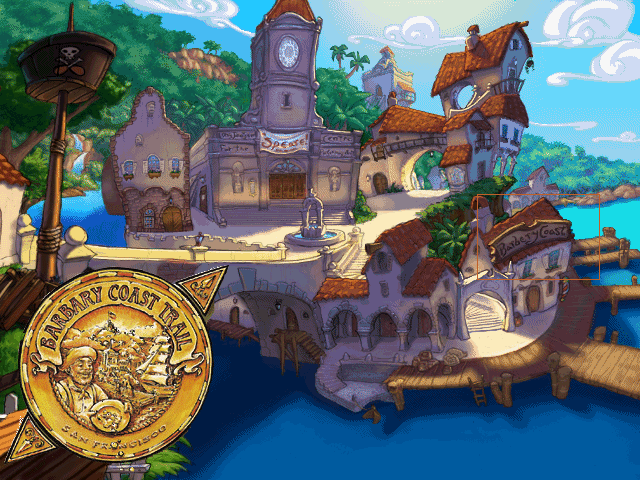
This is the only Monkey Island game to not receive an official Mac port, though Mac users can easily get it running with SCUMMVM and other alternatives.
The image atop Skull Island that appears to be a duck or a bunny depending on how it is looked at is a famous optical illusion.
Links/Sources/Resources
- The SCUMM Bar - The best resource for all things Monkey Island. Includes lots of interviews and rare art, among a ton of information.
- World of Monkey Island - Another great Monkey Island resource.
- The Legend of Monkey Island - See above.
- Spudvision - Some of Purcell's concept art for the ill-fated CMI animated movie.
- Hint Book - Once again, reader "Scummbuddy" performed the painstaking task of scanning the entirety (sans the puzzle-by-puzzle solving section and the inventory list section) of the CMI hint book. Highlights include the Memoirs of Guybrush Threepwood (narrative walkthrough), concept art, and a recap of the first two games.
- Cruddy Sketches and a Red Pen: Pre-Production on The Curse of Monkey Island at LucasArts - an illuminating article on the making of the game, from Animation World Magazine, 1998.
- The soundtrack - Available to download for free. It's scurvy-inducing!